With their big, bulging eyes, webbed toes, and little croaks and squeaks, baby frogs are easy to fall in love with, even if they are slimy creatures!
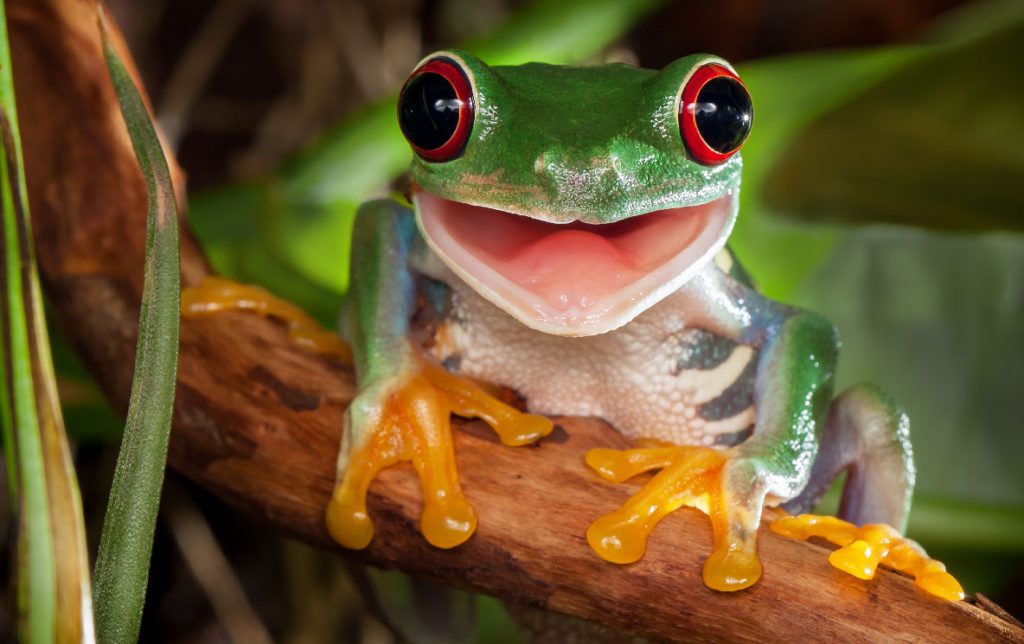
Baby frogs emerge from their eggs as tadpoles with a tail and no legs. Soon they grow two legs, then two more, and then hop away to explore their habitat.
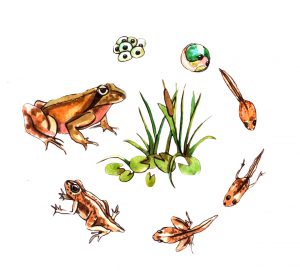
Keep reading to learn more about frogs, and click below to download instructions to make your own jumping origami frog.
Frog Species
There are more than 7,000 species of frogs in the world, and they come in a rainbow of colors! Many are typically in shades of browns or greens to blend in with their environments, but don’t be surprised if you see a frog with blue, yellow, orange, red, black, pink, or white too.
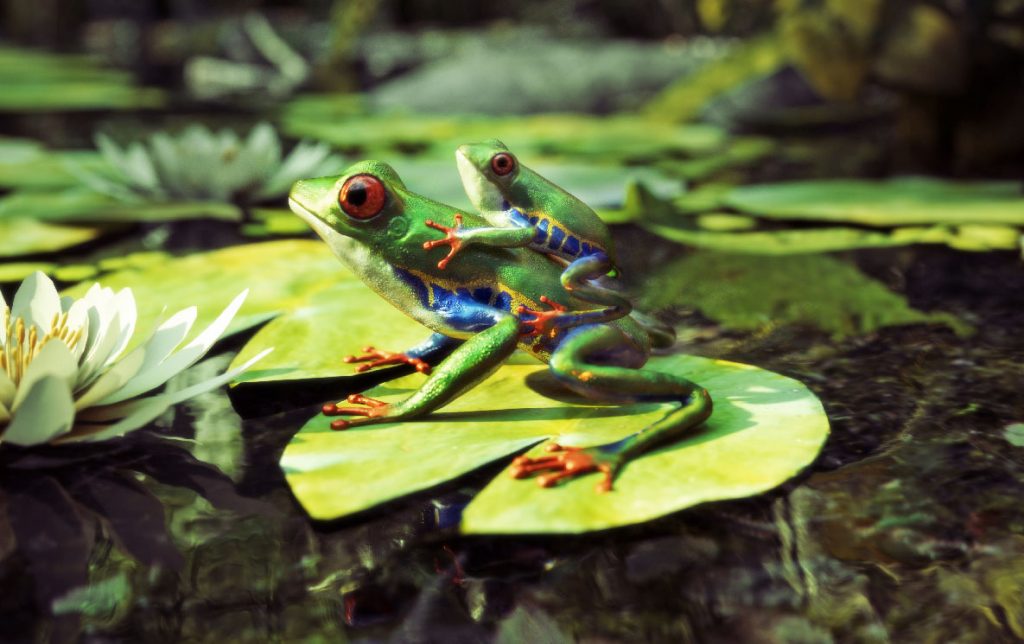
Some frogs are born with the most brilliant colors—and for good reason! The bright colors act as camouflage and a warning to predators not to eat them, as colorful frogs most likely are poisonous.
Frog Movement
Baby frogs may look tiny, but their movements are not! Certain species of little frogs have strong hind legs that can be up to twice as long as their forelegs.
Their special legs give frogs the ability to jump, leap, hop, climb, crawl, and swim from danger, catch a meal, or spring from a lily pad.
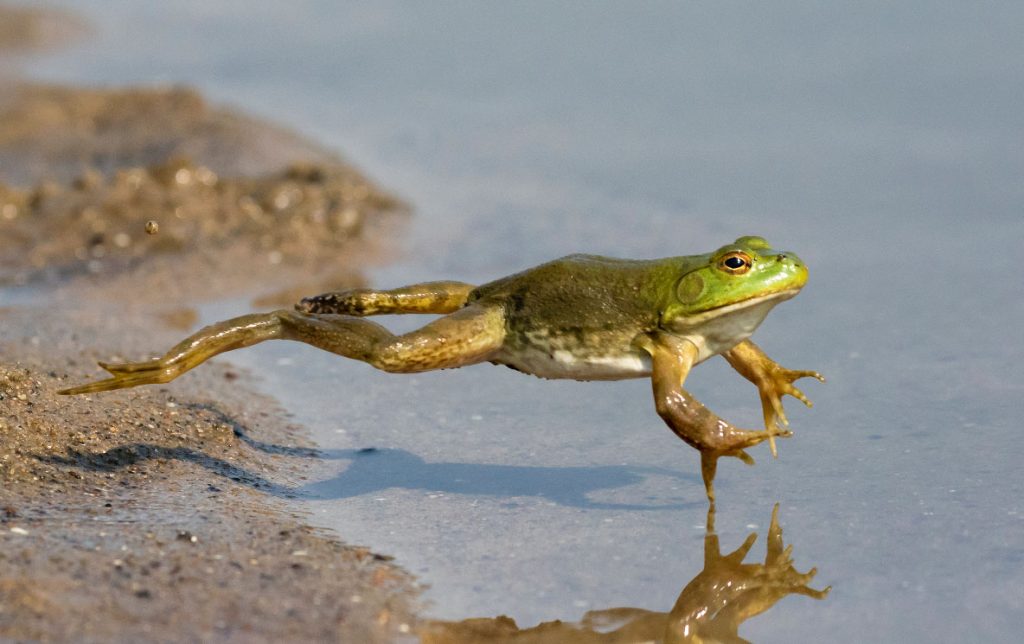
Where Do Frogs Live?
From tropical rain forests and islands to deserts and grasslands, frogs—old and young—live on every continent of the earth except Antarctica. They live in green swamps, cool ponds, swift streams, stagnant rivers, and lazy lakes.
Baby frogs can survive anywhere as long as they have a nearby water source, insects to eat, and plenty of hiding places.
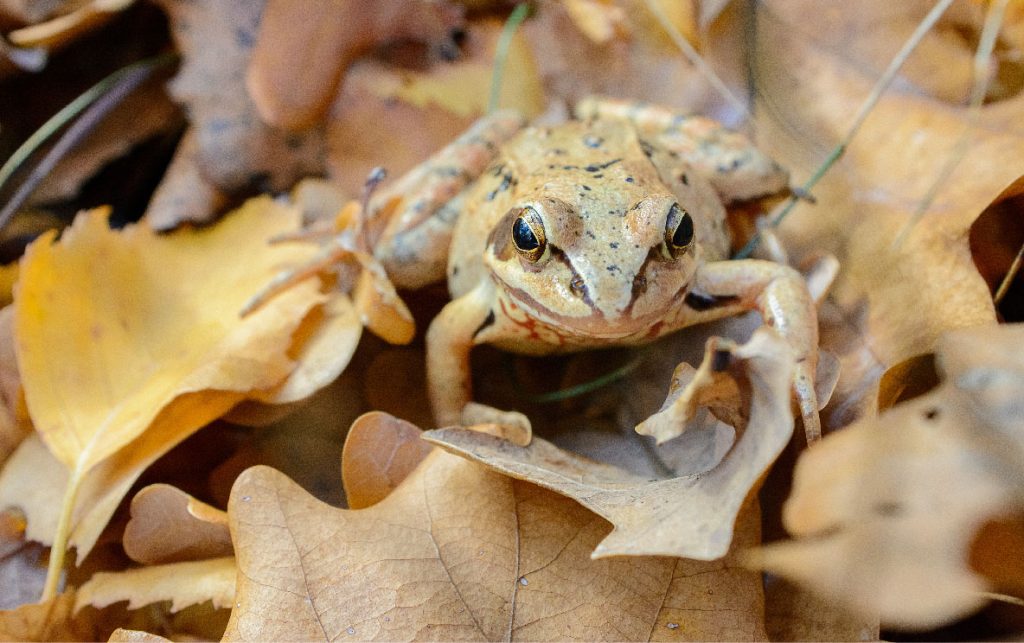
What Do Baby Frogs Eat?
Baby frogs’ diets are adaptable to their habitats, which means they eat what is available to them.
In general, frogs eat insect larvae, spiders, butterflies, grasshoppers, and other small insects. They do not seem to be picky eaters and try to eat whatever they can catch and fit into their mouths!
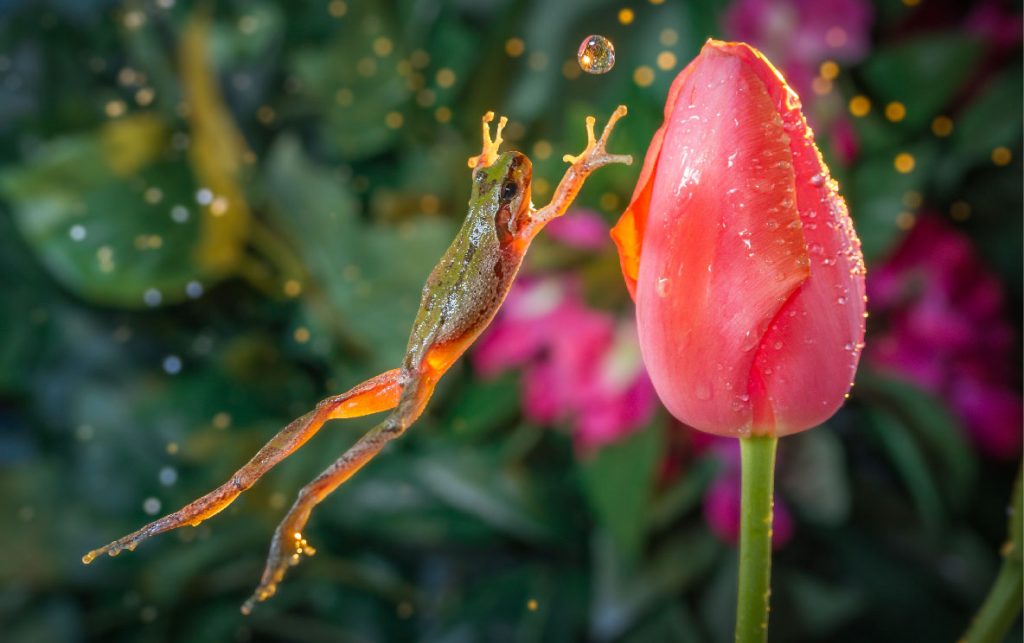
Where Do Frogs Go in Winter?
Many frogs survive the cold winter months by burying themselves under mud and decaying leaves. They then wait out the freezing temperatures by lying there inactive to save up their energy. This practice is similar to mammals that hibernate through the winter.
Other frogs dive deep down to the bottom of ponds, very slowly swimming around to keep from freezing. When spring arrives, the frogs emerge ready for a hopping good time.
Now that you’ve learned all about baby frogs, make your own jumping origami frog!
Download the instructions below.
You may also like. . .

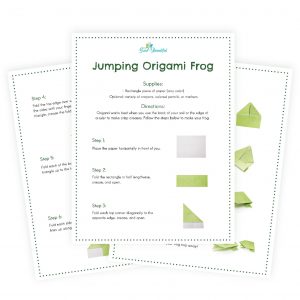
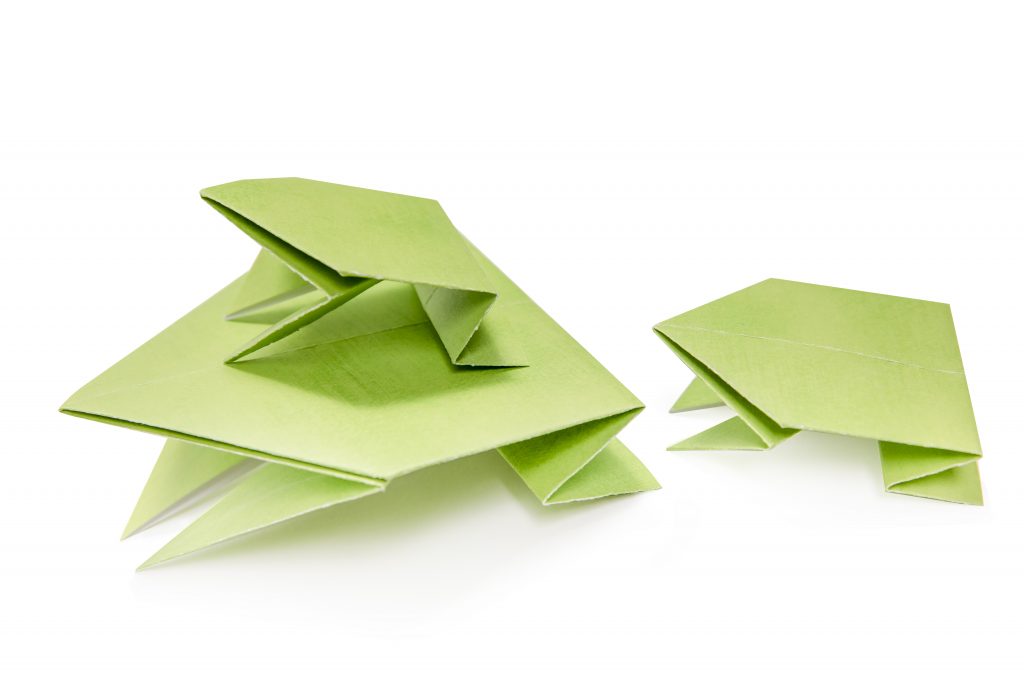






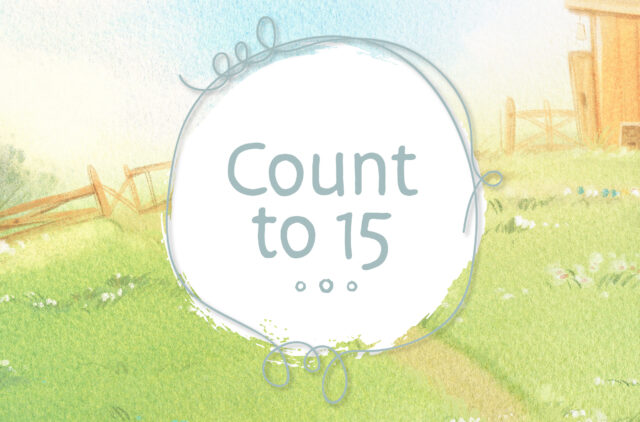






Comments
This is so insightful! My kids will love learning how to make this origami frog.